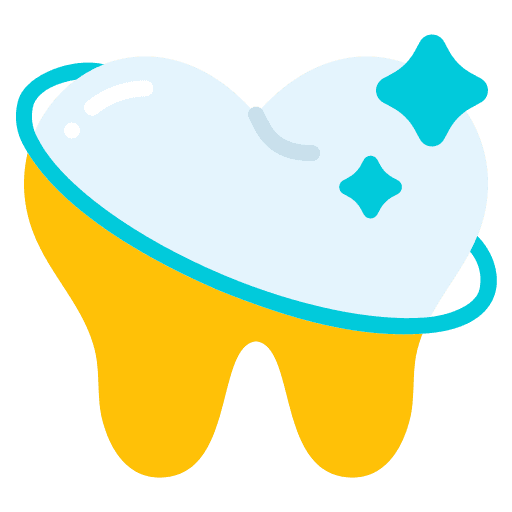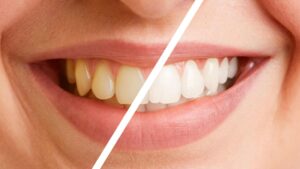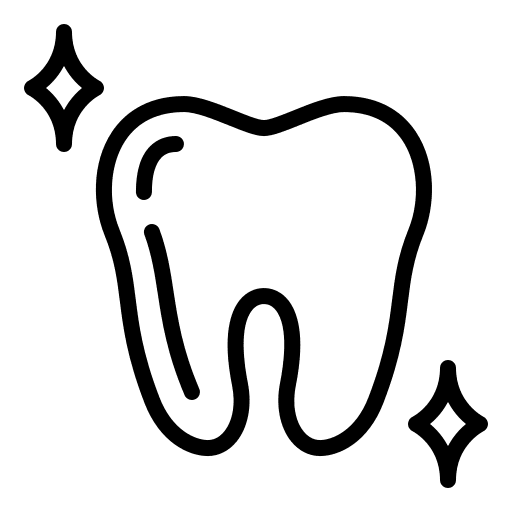Welcome to our comprehensive guide on emergency dentistry, a critical service that often doesn’t get the attention it deserves. Emergency dentistry refers to the provision of immediate dental care to address sudden and severe dental problems. These issues, if left untreated, can escalate quickly, causing unbearable pain and potentially leading to more severe health complications.
The importance of emergency dentistry cannot be overstated. With timely intervention, a dental emergency can be managed effectively, alleviating pain, preventing the spread of infection, and often saving teeth that might otherwise be lost. Moreover, having an emergency dentist at your disposal ensures that you’re never left struggling with dental discomfort, no matter when it strikes.
In this blog post, we’ll dive deep into the world of emergency dentistry. We’ll discuss what qualifies as a dental emergency, why swift treatment is crucial, and common procedures involved in emergency dental care. We’ll also provide useful tips for dealing with dental emergencies, and how to choose an emergency dentist. Ultimately, this guide aims to illustrate how emergency dentistry accelerates your journey towards a comfortable smile.
So, whether you’ve experienced a dental emergency before or just want to be prepared, this blog is for you. Let’s start exploring the role and importance of emergency dentistry.
Understanding Emergency Dentistry

Definition and Scope of Emergency Dentistry
Emergency dentistry refers to dental care services that are provided on an immediate basis to treat sudden and severe dental issues. These services extend beyond regular dental office hours, offering 24/7 care to address problems that need instant attention. The scope of emergency dentistry covers a wide array of issues, ranging from minor toothaches that unexpectedly become severe to trauma-induced dental injuries.
Common Dental Emergencies and Their Symptoms
There are numerous situations that qualify as dental emergencies. Some of the most common ones include:
Severe Toothache: This can be characterized by persistent, throbbing pain, sensitivity to hot and cold, and swelling around a tooth or in your mouth.
Broken, Chipped, or Cracked Tooth: Symptoms can vary based on the severity of the damage, but they often include sharp tooth pain, difficulty chewing or biting, and sensitivity.
Knocked-Out Tooth: This is typically a result of trauma and is a clear dental emergency. If managed promptly and correctly, the tooth can often be saved and re-implanted.
Dental Abscess: This is a severe and potentially life-threatening condition characterized by severe toothache, facial swelling, fever, and a foul taste in the mouth.
Lost Filling or Crown: This might cause discomfort, sensitivity, and pain, and can expose your tooth to further damage or decay.
Role of Emergency Dentistry in Maintaining Oral Health

Emergency dentistry plays a pivotal role in maintaining oral health. It provides immediate relief from pain and discomfort, stemming from various dental emergencies. Quick response in such cases can mean the difference between saving or losing a tooth.
Furthermore, emergency dentistry is crucial in preventing the spread of infection. Dental issues like abscesses, if not treated promptly, can lead to systemic infection, posing serious risks to overall health. By providing timely treatment, emergency dentistry not only preserves oral health but also contributes significantly to general well-being.
The Need for Speed in Emergency Dentistry
Explanation of the Critical Role Speed Plays in Managing Dental Emergencies
When it comes to managing dental emergencies, speed is of the essence. Swift and efficient care can drastically change the prognosis of many dental emergencies. For instance, a knocked-out tooth can often be re-implanted if the patient gets to the dentist within an hour. Similarly, a severe toothache from an abscess requires quick attention to prevent the spread of infection. By addressing dental emergencies immediately, we can alleviate pain faster, save teeth that might otherwise be lost, and prevent further complications.
The Potential Consequences of Delayed Treatment
The consequences of delayed emergency dental treatment can be severe and sometimes irreversible. An ignored dental abscess, for instance, doesn’t just pose a risk of tooth loss; if the infection spreads, it can lead to systemic complications, even becoming life-threatening. Similarly, a cracked tooth, if not promptly treated, can lead to further breakage or infection, eventually requiring more extensive treatment or even extraction. A minor toothache can evolve into intense pain, interfering with your daily activities and sleep. Thus, speed in treatment isn’t just about convenience; it’s about preventing these serious outcomes.
Procedures in Emergency Dentistry
A Walk-through of Typical Procedures Carried Out During Emergency Dentistry
Emergency dentistry involves a variety of procedures tailored to the specific dental emergency at hand. Here are some common procedures that dentists may perform:
Tooth Re-implantation: If a tooth is knocked out and promptly brought to the dentist, they may be able to re-implant it in the socket, securing it with a splint until it heals.
Dental Bonding or Crown: For a chipped, cracked, or broken tooth, the dentist might perform a bonding procedure using a tooth-colored composite resin. If the breakage is severe, a crown might be required to protect and restore the tooth.
Root Canal Therapy: In the case of severe tooth decay or infection, a root canal might be necessary. This involves removing the infected pulp, cleaning and shaping the root canal, and filling and sealing the space.
Tooth Extraction: If a tooth is severely damaged or decayed and cannot be saved, an emergency extraction may be carried out.
Drainage of Abscess: If a patient presents with a dental abscess, the dentist may need to drain the abscess to alleviate pain and begin the process of eliminating the infection.
Discussion on How These Procedures Help in Quick Pain Relief and Prevention of Further Damage
These emergency dentistry procedures are critical for rapid pain relief and preventing further oral damage. For instance, a re-implanted tooth can eliminate the pain of a knocked-out tooth and help preserve the natural structure of the patient’s mouth. Bonding or crowning a damaged tooth not only alleviates the immediate discomfort but also protects the tooth from further harm.
Root canal therapy quickly relieves the severe pain caused by a dental infection and stops the spread of the infection within the tooth. Tooth extraction, although considered a last resort, can be a quick solution to unmanageable pain from a severely damaged or infected tooth. Finally, draining an abscess reduces pain immediately and prevents the spread of the infection to other areas of the body.
In summary, the prompt application of these procedures in emergency dentistry is key to quick pain relief and maintaining overall oral health.
Tips for Dealing with Dental Emergencies

What to Do in the Event of a Dental Emergency before Reaching the Dentist
It’s essential to have some knowledge of initial care in the event of a dental emergency. Here are steps you can take before reaching a dentist:
Severe Toothache: Rinse your mouth with warm water and use dental floss to remove any lodged food. If the pain persists, contact your dentist immediately.
Broken, Chipped, or Cracked Tooth: Rinse your mouth with warm water and apply a cold compress to the area to reduce swelling. Save any pieces of the tooth that you can and bring them to the dentist.
Knocked-Out Tooth: Handle the tooth by the crown, not the root. If possible, try to place the tooth back into its socket. If not, keep it moist in milk or a tooth preservation product. Get to the dentist right away.
Dental Abscess: Rinse your mouth with a mild saltwater solution (1/2 teaspoon of salt in 8 ounces of water) several times a day.
Lost Filling or Crown: If a crown comes off, try to slip it back over the tooth (using over-the-counter dental cement or toothpaste if necessary) and see a dentist as soon as possible. If a filling falls out, place a piece of sugarless gum in the cavity as a temporary measure and schedule a dental appointment.
Tips on How to Avoid Panic and Manage Pain Effectively
Experiencing a dental emergency can be distressing, but panicking won’t help the situation. Here are a few tips to remain calm and manage pain:
Deep Breathing: Practicing deep breathing can help lower your heart rate and keep you calm.
Familiarize Yourself with Emergency Procedures: Knowing what to do in a dental emergency can reduce anxiety. This includes knowing the contact information for your emergency dentist.
Pain Management: Over-the-counter pain relievers can help manage pain, but avoid aspirin for dental emergencies as it can promote bleeding. A cold compress applied externally can also alleviate pain and swelling.
Remember, these are temporary measures. Reach out to a dental professional as soon as possible when facing a dental emergency.
Finding an Emergency Dentist
The Importance of Having an Emergency Dentist
Having an emergency dentist is crucial for everyone, regardless of the current state of their oral health. Dental emergencies are unpredictable and can strike at any moment. In these situations, having a reliable emergency dentist ensures that you get immediate and appropriate care. This can make a significant difference in outcomes, potentially saving a tooth or preventing a serious infection from spreading. An emergency dentist is also vital in providing immediate relief from severe dental pain.
Factors to Consider When Choosing an Emergency Dentist
Choosing the right emergency dentist is a crucial step in ensuring optimal dental care. Here are some factors to consider:
Availability: Emergency dentists should be available 24/7. Dental emergencies can happen at any time, and your dentist should be able to accommodate these unpredictable situations.
Location: Choose a dentist within a reasonable distance from your home. In an emergency, travel time matters, and the closer your dentist, the better.
Experience and Skills: The dentist should have the necessary experience and skills to handle a variety of dental emergencies. You can often find information about a dentist’s qualifications and areas of expertise on their website or by contacting their office.
Comfort: You should feel comfortable with your dentist. This includes their bedside manner, the office atmosphere, and the approach they take to patient care.
Insurance Acceptance: It’s important to choose a dentist who accepts your insurance. Dental emergencies can be costly, and you don’t want to be left with a large bill.
Reputation: Look at online reviews and ask for recommendations. A good reputation in the community can indicate that a dentist is trustworthy and competent.
Remember, having a designated emergency dentist is a significant part of being prepared for potential dental emergencies.
Conclusion
As we conclude this informative guide on emergency dentistry, it’s important to reiterate the vital role it plays in our overall oral health. Emergencies can strike at any time, and being equipped with the right information and resources can make a significant difference in the outcome.
If you do not already have an emergency dentist, we strongly encourage you to find one. Consult with local dental practices, inquire about their emergency services, and ensure they align with your needs. Remember, having a trusted professional at your disposal can be the difference between saving a tooth and losing it.
We also urge you to share the information you’ve gained from this guide with your friends and family. Dental emergencies are a common occurrence and can happen to anyone at any time. By sharing this knowledge, you’re not only helping them be better prepared for these situations but also contributing to a wider understanding of the importance of emergency dentistry.
Take the necessary steps today to ensure you’re prepared for any dental emergencies tomorrow. Remember, your oral health is an integral part of your overall wellbeing. Don’t let a dental emergency catch you off guard – be prepared, be informed, and prioritize your dental health.
FAQ

What constitutes a dental emergency?
A dental emergency is a situation that requires immediate attention to prevent the risk of permanent damage or the need for more complex and expensive treatments later on. These situations often involve severe pain, sudden swelling, profuse bleeding, or a lost or broken tooth.
What should I do if I break or chip my tooth?
If you break or chip your tooth, it’s essential to see a dentist immediately. Rinse your mouth with warm water, try to save any pieces of the tooth, and apply a cold compress to the area to reduce swelling while you are on your way to the dentist.
I knocked out a tooth. Can it be saved?
Yes, a knocked-out tooth can often be reinserted. Pick it up by the crown, not the root, and if it’s dirty, rinse it lightly with milk. Try to reinsert it into the socket if possible, but if you can’t, keep it moist in a glass of milk or a tooth preservation product until you can see your dentist. Time is of the essence – see a dentist immediately.
Is a toothache considered a dental emergency?
It can be. If the toothache is severe, lasts for more than a day or two, or is accompanied by other symptoms like fever, earache, or pain when opening your mouth, you should seek emergency dental care.
What do I do if I have a dental emergency outside of my dentist’s office hours?
Most dental practices have provisions for emergency care. If your dentist’s office is closed, there will likely be an emergency contact number on their answering machine. If you can’t reach a dentist, go to the emergency room.
How can I prevent dental emergencies?
Regular check-ups and cleanings can help prevent many dental emergencies. Additionally, wearing mouth guards during sports, avoiding hard foods that could crack teeth, and not using your teeth to cut or open things can prevent injuries.
I have a swollen jaw and trouble swallowing, is this a dental emergency?
Yes, these symptoms could indicate a serious infection such as an abscess, which can be life threatening if not treated immediately. Please see a dentist or go to the emergency room right away.
What is the typical cost of emergency dental care?
The cost of emergency dental care varies widely depending on the treatment required. It’s best to contact your dental office or insurance provider for specifics.
Does dental insurance typically cover emergency services?
Most dental insurance plans do provide some coverage for emergency services, but the extent of coverage will depend on your specific plan. It is best to check with your insurance provider.
What is the difference between a dental emergency and a dental urgency?
A dental emergency is a situation that requires immediate attention to prevent the risk of permanent damage, while dental urgency is a situation that requires prompt attention to prevent the condition from becoming an emergency. A persistent toothache, for instance, can be a dental urgency, while a knocked-out tooth is a dental emergency.















